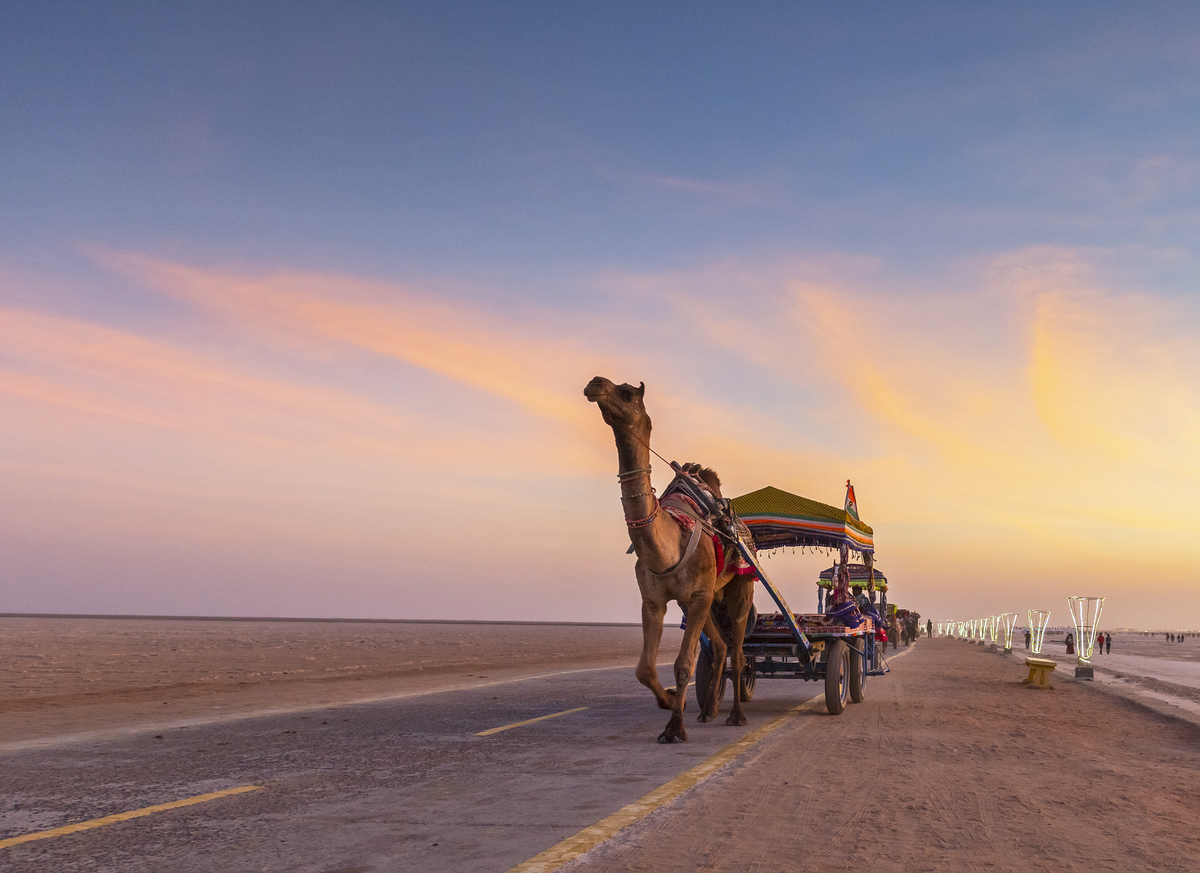
rann of kutch
The Salt Desert of India
The Rann of Kutch is a large area of salt marshes that span the border between India and Pakistan. Tribal hamlets with cylindrical mud bhungas (huts) are the epicenter for Kutchi embroidery, tie and dye, leatherwork, pottery, bell metal craft and the famous Rogan painting by the only surviving expert family. Rann Utsav is celebrated every year by Gujarat Tourism starting end of November till New Year’s February. This festival is also called as the White Desert Festival. The Rann of Kachchh is famous for its white salty desert sand and is reputed to be the largest salt desert in the world.
Brief Itinerary
| Day | Highlights |
|---|---|
| Day 1 | ahmedabad to kutch [400KMS] |
| Day 2 | kutch sightseeing |
| Day 3 | kutch to mandvi [132 KMS] |
| Day 4 | mandvi sightseeing and Departure |
Highlights
- Kalo Dungar (Black Hill) : the highest point in Kutch and you can see all the way across to the Pakistani border.
- Stay in characterful Kutchi bhungas (mud huts), traditionally crafted and decorated with handicrafts.
- Do not missout on the Sunrise and Sunsets at the White Rann of Kutch
- Visit the Offbeat Beach of Mandvi which offers you the utmost scenery.
Detailed Itinerary
Day 1 : AHMEDABAD to kutch
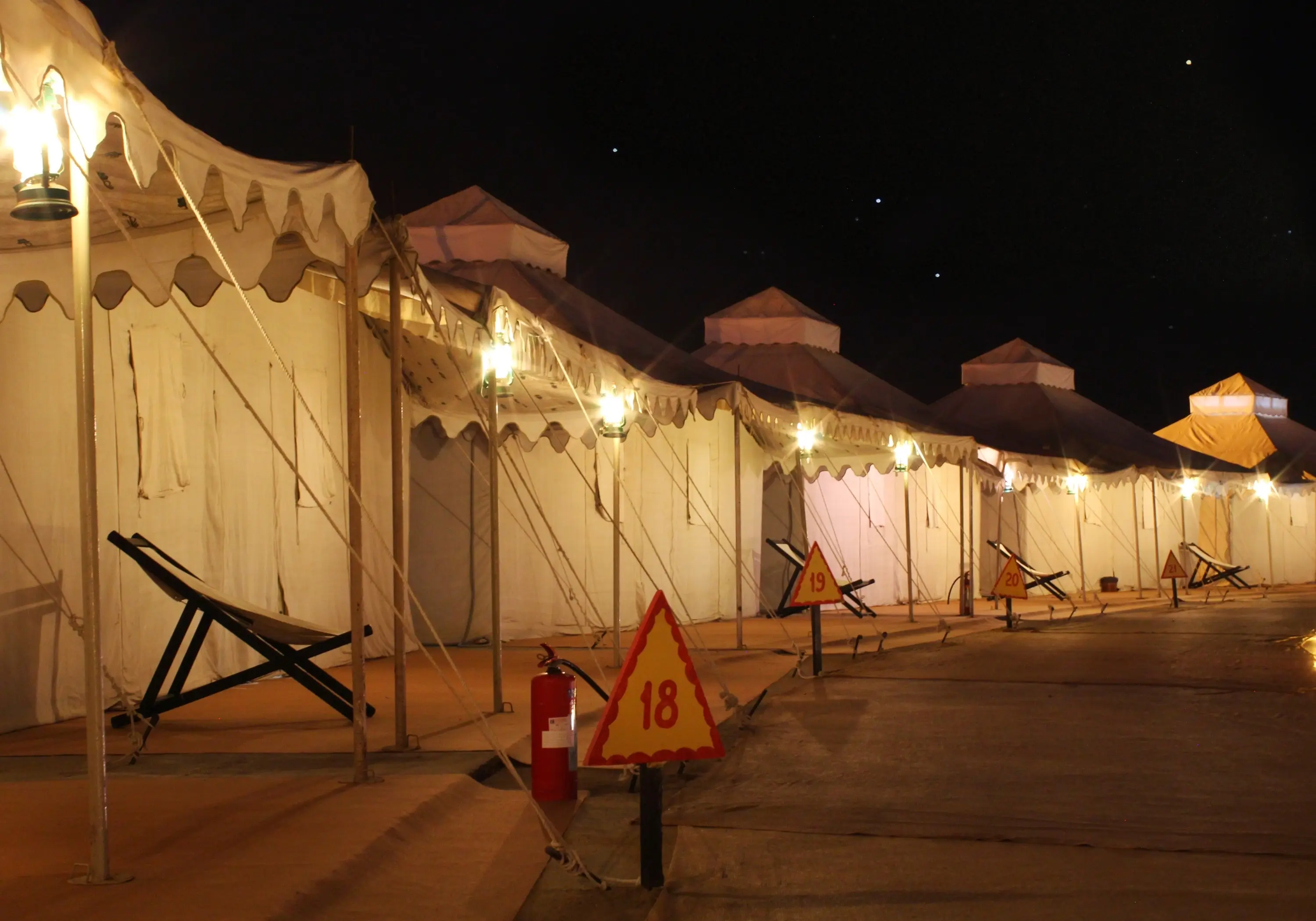
Arrive at the Stay in the Dhordo Village.
Evening Tea/Coffee Transfer to White Rann to witness the grandeur of sunset.
Dinner at the Stay Place and Cultural Night or Campfire (Which Ever is Possible)
Day 2 : kutch sightseeing
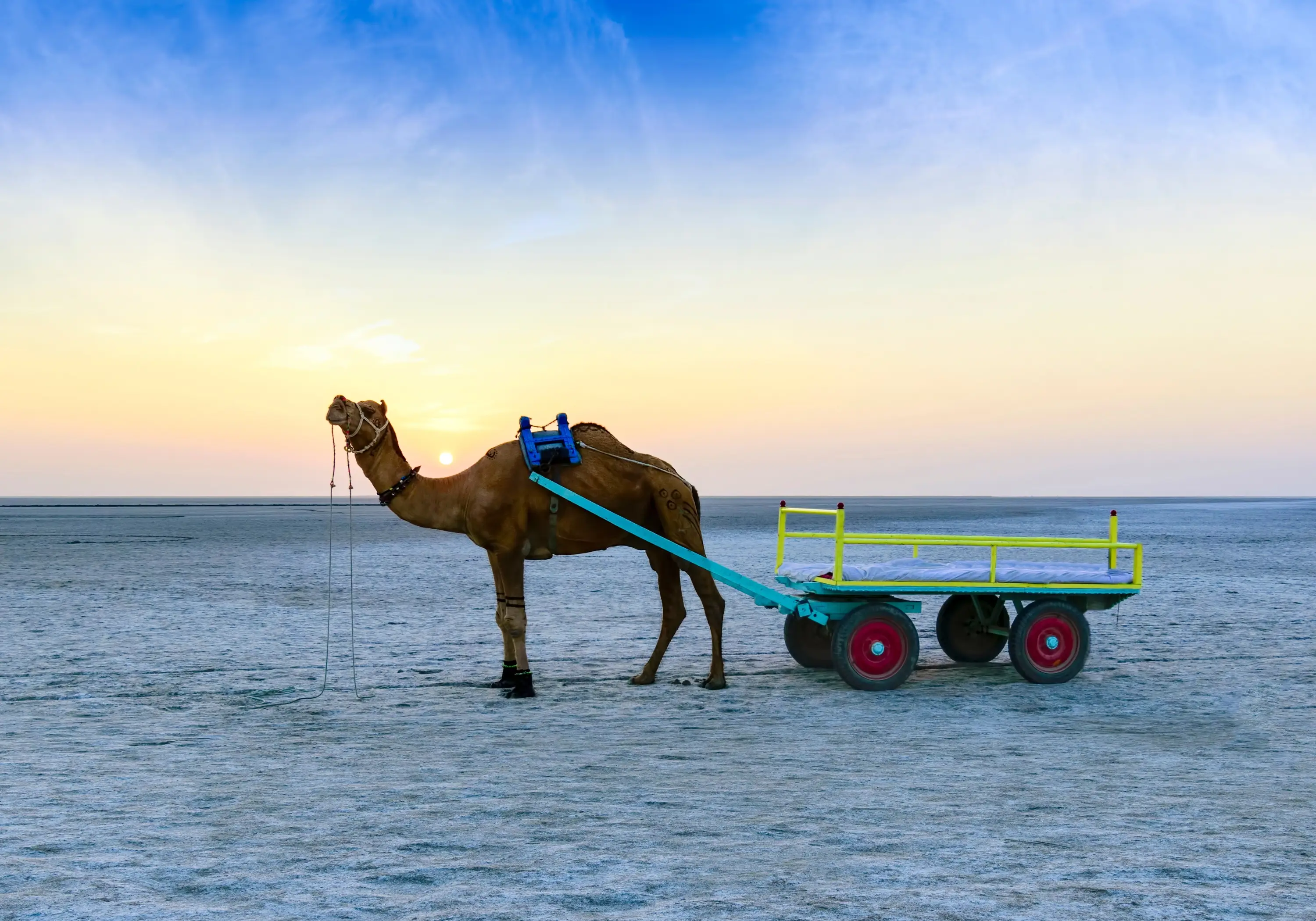
Transfer to White Rann to witness the grandeur of sunrise.
Arrive Back for Breakfast Tour to Kala Dungar, India Bridge, On the route visit to handicraft village ‘Gandhi nu Gaam’.
Camel Ride / Adventure Activities with the Sunset Explore Shopping Options at the Rann Utsav
Day 3 : kutch to mandvi
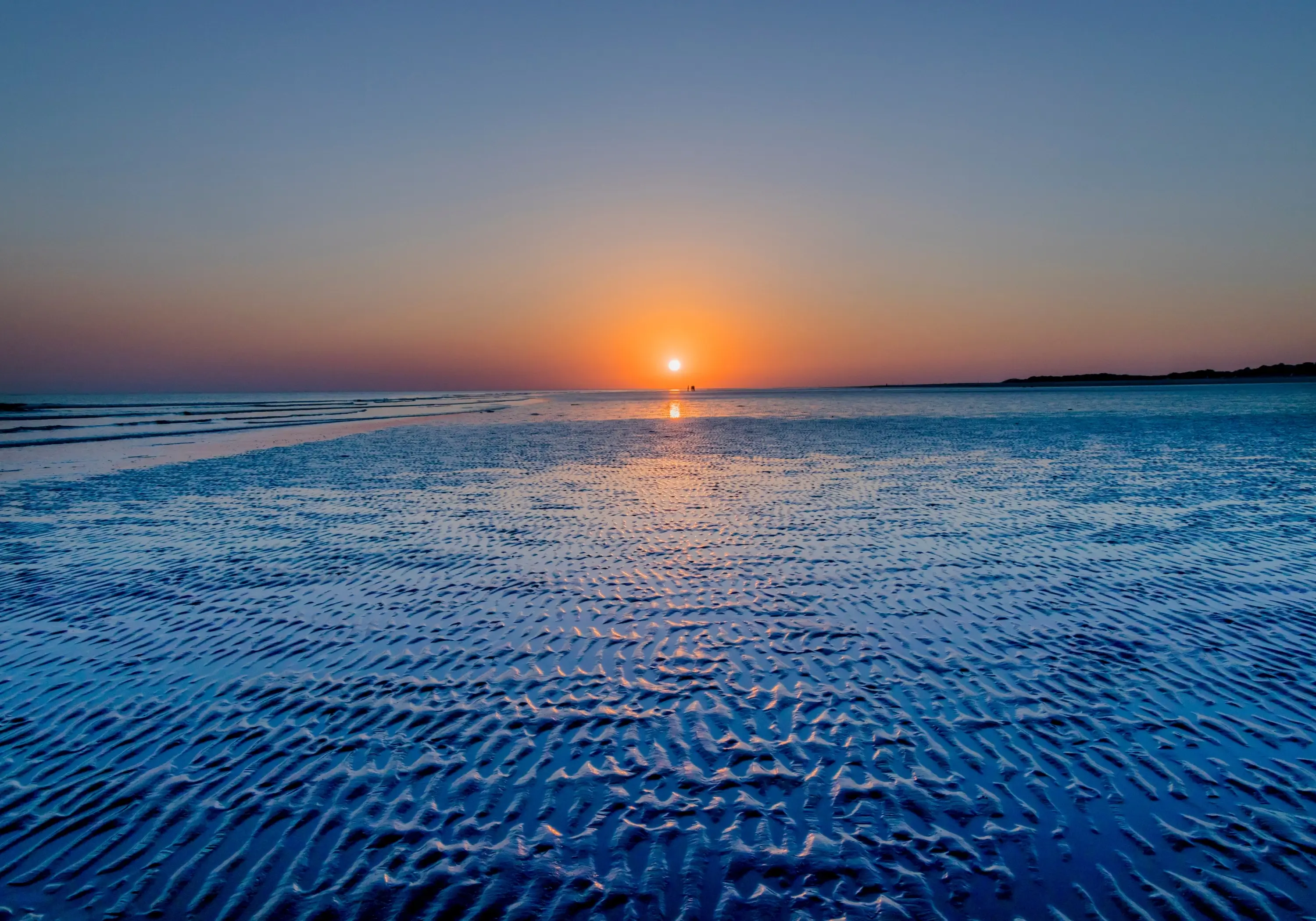
Today after the Sunrise and Breakfast We go to Mandvi.
On the Way to Mandvi we would visit Bhujodi (A famous Shopping Spot for the Local Cultural Handicrafts)
Mandvi is an important beach famous among travelers for peace and solitude.
Mandvi has beautiful white sand, serene locales and enchanting sunset views.
Dist. from Tent City is approx. 140 kms one way.
Visit Shyamji Krishna Varma Memorial
Visit Vijay Vilas Palace
Eat Dabeli, Kadak and Lunch at Special Spots.
Evenings at the Beach, Campfire at Night and Dinner at the Hotel.
Stay in Mandvi
Day 4 : mandvi sightseeing and departure
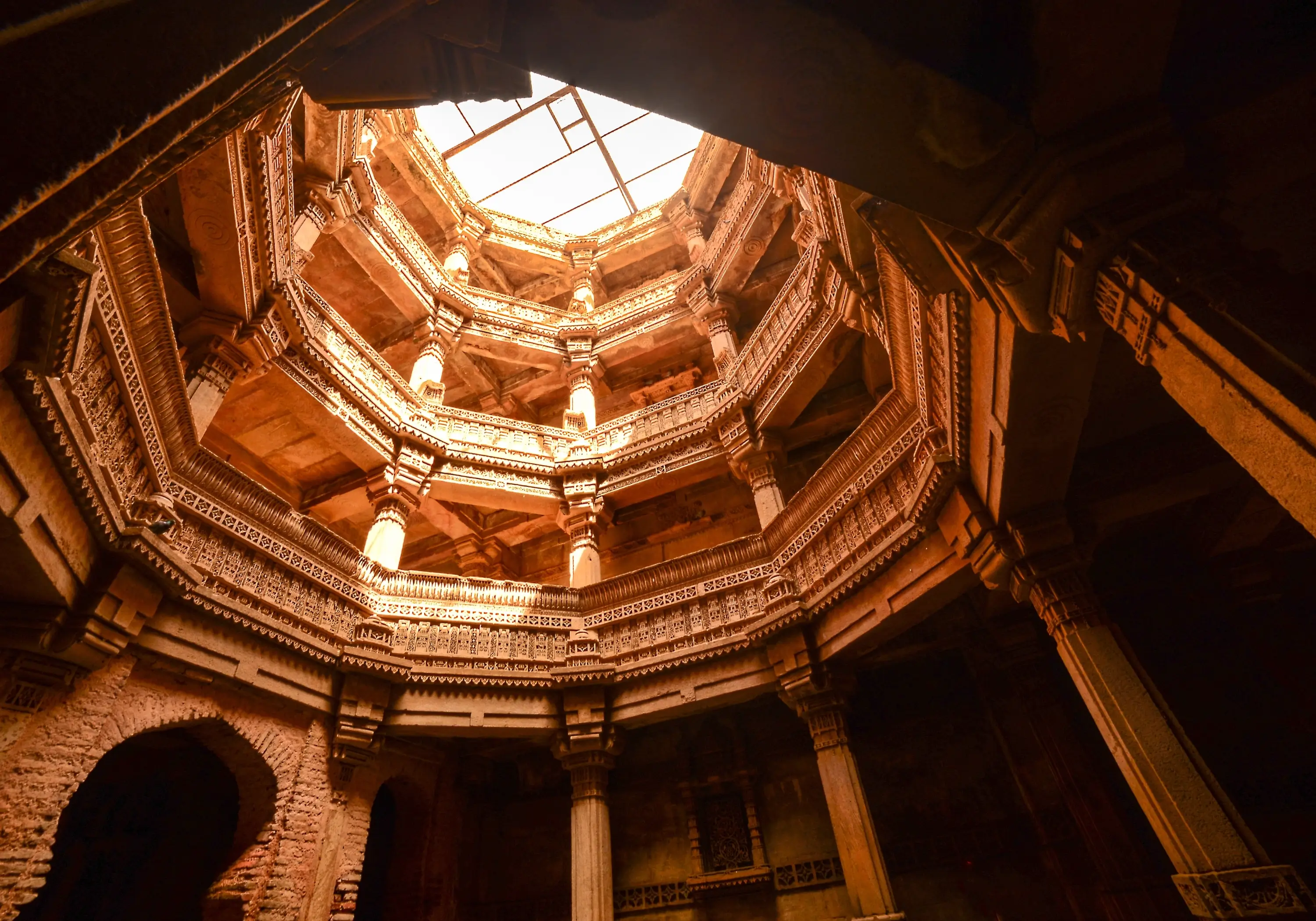
A heavy Breakfast and morning sunrise at Mandvi.
Mandvi to Ahmedabad departure.
PLACES AROUND KUTCH
KUTCH MUSEUM
(Approx. time 30 min)
A visit to the Kutch Museum, to learn about the history of tribal and folk tradition of the district, will help you get to know about present-day people and their lives Remember that visiting a museum is a great way to learn about history, but tribals are not merely part of history. they are a major part of Kutch’s (and India’s) population and cultural identity today. (Kutch museum remains closed on Wednesday).
SRI SWAMINARAYAN TEMPLE
(Approx. time 20 min)
Made of marble, intricate carvings adorn the pillars and ceiling of the most expensive temple built in the state of Gujarat recently.
BHUJODI
(Approx. time 40 min)
The handicraft village Hiralaxmi Craft Park has a vision to reserve, restore and promote the art and craft of Kutch and make them accessible to the public.
The handicraft village is where live artisans can be seen working.
INDIA BRIDGE
You don’t need any prior permission to visit india Bridge, but to go the Vighakot Border one must apply for a permission at the BSF office in Bhuj.
7 days prior to the journey and the permission is totally in their perview to be granted or not.
If the Permission is granted, it is a 70-80 kilometer tough terrain to cross before reaching the actual India-Pakistan border.
KALA DUNGAR
Kalo Dungar or Black Hill is the highest point in Kutch, Gujarat, india, at 462 m.
This is probably the only place in Kachchh from where a panoramic view of the Great Rann of Kutch is possible At Nights and even during Days, Pakistan Can be seen from this place.
PLACES AROUND MANDVI
SHYAMJI KRISHNA VARMA MEMORIAL
Shyamji Krishna Varma was born on 4th October 1857 in the Mandi Town of Kutch District of Gujarat.
He was one of the foremost freedom fighters in the history of freedom movement of India.
The memorials’ objective is to pay tribute to the contribution of Shyamji Krishna Varma and also to educate the young generation about those great Indians who sacrificed everything for the country’s freedom
VIJAY VILAS PALACE
The great palace of Mandvi was built in 1929 by his highness Maharao Vijay Singhji, The Maharao of Kutch, as a summer resort. This palace has a domed terrace that gives a panoramic view of the sea.
It has interiors made like offices where the king used to work.
Have Any Doubts ?
Get in Touch With Our Team and they will help you out.
Want to Confirm this Trip?
Drop a Message and we will share the Payment Link with you.

Inclusions
Cab Services
Breakfast, Lunch and Dinner
Cultural Activities
exclusions
Any extra Expenses that happens on your side
Any services or activity charges other than those included in inclusions
